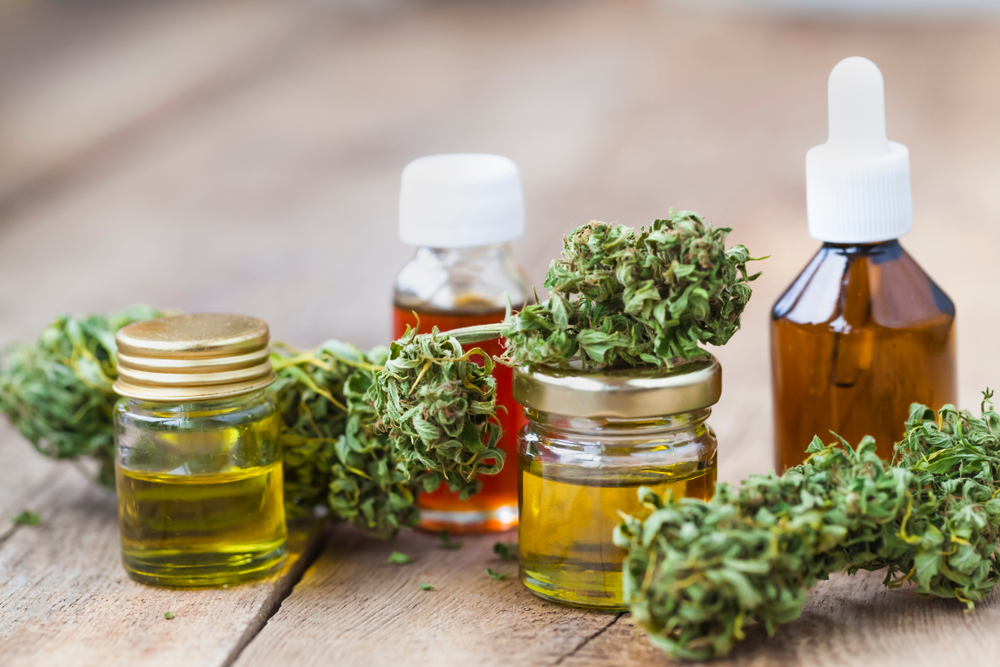“I don’t smoke and/or have never smoked anything…” For new consumers, the idea of smoking marijuana can still hold a taboo reputation. Many people are turned off at the idea of trying cannabis because they’re convinced they will have to smoke it. There are a number of ways to consume cannabis that do not involve smoking or inhaling at all.
What are the different ways to use cannabis?
Smoking and vaporizing are the most common forms of cannabis usage to date. Smoking cannabis is the traditional and most “popular” method of consumption. On the other hand, the most common noncombustible THC (and CBD) products include edible treats, beverages, tinctures (dropped under the tongue or into a beverage), transdermal patches and topical applications.
Smoking cannabis comes with many options. Many users prefer to use a glass pipe, while another popular choice is using a rolling paper (joints, blunt wraps) to enjoy cannabis flower. Vaping is the primary way concentrates are consumed as well. Concentrates require different “rig” or pipe accessories that support the high temperature needed for extract combustion.
Vaporizing is similar to smoking in that it requires heat, combustion and inhalation. The world of vaporizers has grown considerably in recent years, meaning users interested in this consumption method have no lack of options when it comes to the device. When vaporizing cannabis products, there is typically a “cartridge” or “pod” that contains the extracted cannabis oil or, for more advanced vaporizer devices, you may have a reservoir where you manually insert your desired amount of concentrate to be vaporized.
Edibles (or consumables) have gained popularity in recent years as the cannabis industry has grown. In the previous decade, the idea of consumable cannabis was rather limited to “pot brownies.” Now, interested consumers can find a vast array of cannabis products suitable to be eaten or drank. The most popular forms of edibles are gummies and small treats like cookies or chocolates. There are also options available for consumers who would prefer to make their own edibles. Brands have rolled out lines of olive oil, butter, honey and even more cannabis-infused ingredients available for consumers who prefer to make their own edibles.
How do I know how much to consume?
When it comes to consumption and frequency, it all depends on what cannabis product you are interested in consuming. Edible and topical products that contain THC are the most important to identify your appropriate dose. Some brands provide detailed charts indicating how much should be used to start for most consumers. While dosage charts and specific milligram tracking are quite helpful, consumables are the product type most likely to cause discomfort or unwanted effects. When using consumable products (edibles, beverages, lozenges, etc.), it is important to “start low” in dose and “go slow” before consuming additional product.
Traditional smoking of cannabis flower is much different than other methods of consumption. There is no set or general standard for dosing, and the potency of flower varies by strain and by batch. For new smokers, it is advised that you start with a small amount of flower to begin and gradually increase as you find your tolerance threshold.
How long does cannabis take to “kick in?”
The rate of effect onset will vary by product type and for individual users. Generally, smoking is the most rapid method of cannabis use to achieve the desired effects. Products like edibles and transdermals tend to impose their psychoactive effects over time as the product is digested or circulated into the bloodstream. Edibles should be given at least a full hour (or two!) to take effect because taking additional edibles before realizing their full potential impact can result in an uncomfortable or adverse reaction.
It is important to understand that no exact psychoactive timeframe exists for either THC or CBD products. The safest way to ensure a desired outcome is to start low in dosage and go slow.
How long will a cannabis high last?
The length of a cannabis “high” is dependent on the individual user and the type of cannabis consumed. As stated above, cannabis consumption and its effects are a deeply individualized experience. Factors like weight, consumption habits and diet can play a major role in a person’s reaction to cannabis and the longevity of its effects.
When smoking cannabis, the onset of effects is rather immediate, THC levels within the user typically peak within the first 30 minutes after consumption and up to an hour afterward. A high from smoking cannabis flower may last up to several hours but should decrease in intensity after the peak levels of THC begin to drop.
Vaping concentrates is known as one of the most immediate onsets of psychoactive effects due to the high THC percentage in concentrated cannabis products. The duration of a high from concentrates can vary greatly depending on the individual consumer. As previously noted, factors like body weight and cannabis tolerance levels will certainly drive how long a concentrate high lasts. For newer and inexperienced cannabis users, smoking concentrates can be unexpectedly intense, so be sure to start small. The recommended dab size for new or inexperienced users, or an average session, is comparable to that of a grain of rice or smaller.
As previously noted, the effects of edibles and transdermals can take longer for users to experience as the product is digested or circulated into the bloodstream. However, the intoxicating effects can last longer than vaping cannabis products.
Again, no exact psychoactive timeframe exists for either THC or CBD products. The safest way to ensure a desired outcome is to start low in dosage and go slow.
How often should I use cannabis?
For adults who want to use cannabis products recreationally, it will depend on the desired effect or result when it comes to suggesting dosage or a routine around consumption. Cannabis flower is the best product to control the intensity of effects as each inhale only contains a small amount of THC. Using cannabis regularly can result in an increased tolerance to intoxicating effects. There are no standard guidelines for how often a recreational consumer should use a product, but if the desired effects are not being achieved, changes should be made to consumption routines. Medical consumers should always consult their doctor regarding dosage, frequency and product type. It is important to identify the safest and most effective cannabis regimen tailored to the individual needs of each patient.
What are concentrates? What are some examples?
Concentrates (or extracts) are a form of cannabis product that has been extracted from the marijuana plant. Whole cannabis flower or sometimes cannabis “trim” (flower or shake that has been finely ground) is stripped of its essential elements, resulting in a concentrated mass of THC and other terpene profiles. Concentrates are one of the most potent and fastest-acting forms of using cannabis.
Concentrates can be consumed by vaping and even orally, depending on the product. The most common way users consume concentrates is by vaping them using a glass water pipe specifically designed for concentrate products.
What is tincture?
Tinctures are a liquid cannabis product that is blended with a natural carrier oil. Most tinctures use MCT or coconut oil for their excellent carrier properties. MCT oil is made from a type of fat called medium-chain triglycerides, making it extremely mild in taste, malleable to a variety of taste palettes and easily flavored with added terpenes.
Available in both CBD and THC varieties, tinctures are meant to be dropped under the tongue and “swished” to allow for highest absorption rates to the bloodstream. Users can also use the dropper typically included with a tincture to drop precise amounts into a beverage or even on top of food.
What is a topical?
Topical products are designed to be applied to or worked into the skin/dermis. Topical products are recommended for those who suffer from muscle tension or general aches and pains. Topicals are designed to absorb into layers of the dermis where pain receptors are present, assisting with pain relief and inflammation reduction.
Common topical products include salves (a balm-type rub that is applied directly to the skin), lotions, transdermal patches and sprays. Topical products typically include other beneficial ingredients aside from their medicinal CBD or THC elements. Essential oils like peppermint, eucalyptus and cinnamon oil are used to provide a pleasant aroma but can also play a role in product effectiveness. For example, cinnamon oil is a known stimulant, making it an excellent ingredient to encourage healthy blood flow and skin cell stimulation. Not only is this helpful for a graceful aging process, but it also supports quick circulation of CBD or THC to the affected area. Peppermint and eucalyptus have strong cooling properties, assisting in the alleviation of pain and inflammation.
What are edibles? How are they made/How do they work?
Edibles are products that are consumed like food and beverages. As of today, there are hundreds of edible products available to interested consumers. From protein powders to classic candies infused with THC, the range of choice is quite large! Small treats such as chocolate bars, mints, cookies/brownies and gummies are the most commonly used and sold form of edibles, but in recent years there has been an increase in medicated beverages available to consumers. Waters, teas, sodas and even nonalcoholic beer infused with cannabis have become quite popular. For consumers who prefer to incorporate cannabis into an existing dietary routine, cannabis butters and oils made for cooking are an ideal choice. Cannabis butter and oils such as olive oil can be used exactly how the non-medicated form of the ingredient would be prepared within a recipe.
Typically made with highly concentrated cannabis — whether an actual concentrate (hash oil), cannabis-infused butter or infused oil — edibles enter the body through the mouth and are absorbed into the bloodstream. The absorbed compounds are metabolized in the liver, and the remaining THC and its metabolites circulate, eventually reaching the brain.
It’s important to recognize which form of cannabis concentrate was used to create your edibles as they can yield different effects. Eating raw cannabis will not have any intoxicating effects. A process called decarboxylation plays a crucial role in determining the type of effects an edible may present. Decarboxylation involves slightly heating THCA to change it into the intoxicating THC, but the human body cannot convert THCA into THC, even when raw cannabis is added to a shake or smoothie or consumed on an empty stomach.


